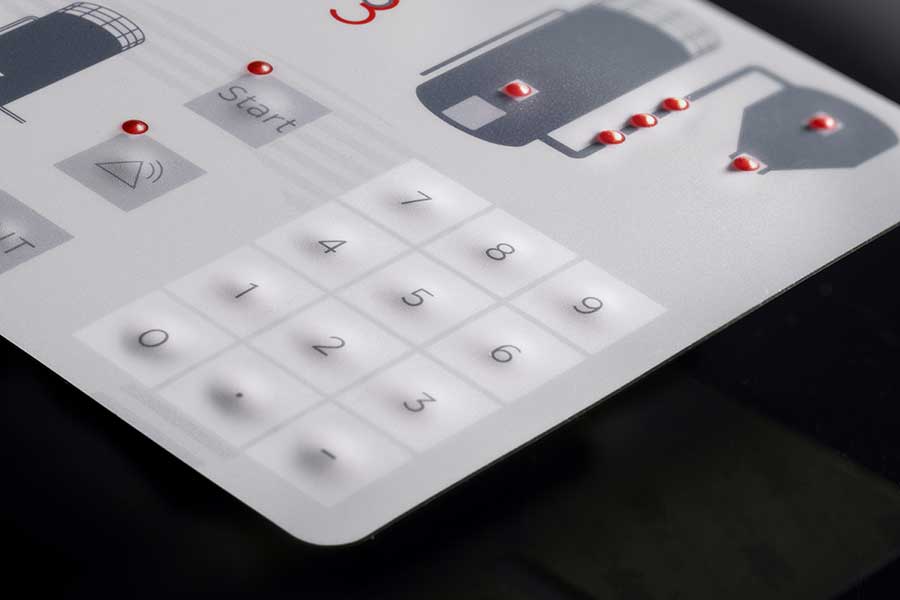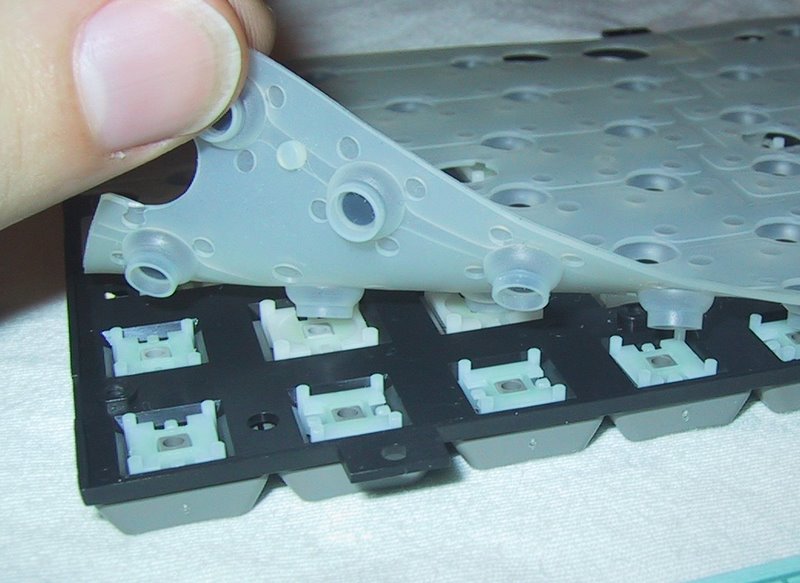Learn more about the Innovative Manufacturing Techniques Behind Membrane Switches
Learn more about the Innovative Manufacturing Techniques Behind Membrane Switches
Blog Article
Discover the Future of Control Interfaces: Why Membrane Layer Switches Are Acquiring Appeal
As markets increasingly focus on effective and user-friendly control user interfaces, membrane buttons are arising as a compelling option that combines functionality with design adaptability. Their strength and portable nature make them particularly suited for a range of applications, from healthcare to customer electronic devices. With the surge of clever technology and sustainability issues, the capabilities and innovations bordering membrane switches warrant better examination. What details benefits do they supply that could redefine our communications with innovation in the coming years?
Recognizing Membrane Switches
Membrane buttons are integral parts in modern-day electronic gadgets, serving as user interfaces in between equipments and users. These buttons consist of multiple layers, normally including a graphic overlay, a spacer layer, and a circuit layer.

Durability is another essential function, as membrane buttons can be designed to resist ecological factors such as wetness, dirt, and chemicals. This durability makes them optimal for applications in rough conditions. In general, comprehending the framework and function of membrane switches is important for valuing their role in the development of customer interfaces in today's technology-driven world.
Trick Advantages of Membrane Layer Switches
Using a variety of advantages, membrane switches have actually become a recommended selection in numerous applications (Membrane Switches). One of the primary benefits is their compact design, allowing producers to optimize room in devices without jeopardizing functionality. Membrane buttons are light-weight, which is specifically beneficial in mobile electronic gadgets

Furthermore, these switches supply outstanding toughness. Built from flexible materials, they are resistant to dirt, wetness, and a variety of environmental aspects, making them suitable for rough conditions. This sturdiness frequently translates right into a much longer life-span compared to conventional mechanical switches.
Additionally, membrane switches allow for seamless combination of signs and graphics, providing visual versatility and boosting individual experience. Customization alternatives are considerable, enabling brand names to create distinct interfaces that line up with their item identification.
The level surface area of membrane switches protects against the accumulation of dirt and gunk, making them optimal for sanitary settings. Membrane layer buttons are cost-effective, as they can be created in high volumes at lower prices, making them accessible for a large array of sectors.
Applications Across Industries

A myriad of sectors are increasingly embracing membrane layer switches because of their flexibility and functionality. These manage interfaces are especially common in the automotive market, where they are made use of in control panels and infotainment systems, supplying a easy to use and streamlined user interface. In the clinical field, membrane switches over facilitate the operation of diagnostic equipment and person surveillance systems, making certain dependability and ease of usage in vital scenarios.
Furthermore, the customer electronics industry gain from membrane switches in tools such as microwaves and push-button controls, permitting structured style and enhanced sturdiness. Membrane Switches. The aerospace industry also makes use of membrane layer switches in cabin controls, where space restrictions demand compact and additional hints effective style options
Moreover, the industrial market uses membrane layer buttons in equipment control board, providing strength against extreme atmospheres and ensuring operational performance. Retail settings have embraced membrane buttons in point-of-sale systems, enhancing customer interaction while preserving visual charm.
Style Patterns in Membrane Switches
Developing together with technological improvements, design fads in membrane switches are significantly concentrated on enhancing individual experience and visual allure. Modern membrane switches are being developed for simpleness and instinctive usage, enabling users to navigate user interfaces effortlessly. This change towards user-centric design emphasizes tactile feedback, making certain that customers receive immediate confirmation of their activities.
Additionally, personalized graphics and shades are coming to be typical attributes in membrane layer button layouts. This flexibility enables manufacturers to produce customized user interfaces that straighten learn this here now with branding and details user needs. The unification of backlighting is an additional popular pattern, as it not only improves exposure in low-light problems however additionally adds a visually striking aspect to the overall design.
In addition, the trend in the direction of thin and lightweight products is acquiring grip, permitting sleeker layouts that can seamlessly incorporate right into different applications. This change not just boosts appearances however also adds to the general capability and sturdiness of the buttons. Environment-friendly products are progressively being used, showing a more comprehensive motion towards sustainability in item layout. These layout trends jointly highlight the growing significance of incorporating type and function in the development of membrane switches, inevitably enriching the customer experience.
Future Overview for Control Interfaces
The future of control user interfaces is poised for significant transformation as arising technologies proceed to reshape user communications across numerous gadgets. The integration of advanced products, such as flexible electronic devices and conductive inks, will certainly boost the convenience and performance of membrane buttons, making them progressively versatile to a variety of applications. Furthermore, the rise of the Internet of Things (IoT) will certainly drive demand for even more instinctive, user-friendly interfaces that can seamlessly integrate with smart gadgets.
As fabricated knowledge and artificial intelligence progress, manage user interfaces will likely incorporate even more personalized features, allowing customers to interact with gadgets in ways that are tailored to their preferences and routines (Membrane Switches). This shift in the direction of user-centric style will place membrane layer buttons as a principal in the marketplace, especially in fields like health care, automotive, and customer electronics
Furthermore, the push for sustainability will certainly encourage makers to discover eco-friendly materials and manufacturing approaches, guaranteeing that the future of control user interfaces straightens with environmental factors to consider. Generally, as modern technology proceeds to advance, membrane layer buttons will certainly become increasingly sophisticated, paving the method for cutting-edge control remedies that improve customer experience and functional efficiency across diverse sectors.
Final Thought
In final thought, the enhancing fostering of membrane layer switches highlights their importance in the evolution of control user interfaces. As straightforward user interfaces end up being necessary in the context of IoT and AI developments, membrane layer Your Domain Name switches are positioned to play an important function.
As sectors significantly focus on reliable and easy to use control user interfaces, membrane buttons are emerging as a compelling option that integrates functionality with design adaptability.Durability is one more vital attribute, as membrane buttons can be made to resist environmental variables such as dampness, dirt, and chemicals.Evolving alongside technical innovations, design patterns in membrane buttons are increasingly concentrated on enhancing customer experience and visual appeal. Modern membrane switches are being created for simpleness and user-friendly usage, enabling customers to browse user interfaces easily. These design patterns jointly highlight the growing value of incorporating type and function in the development of membrane switches, ultimately improving the customer experience.
Report this page